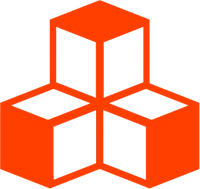WebGPURenderer
This example shows how to run the experimental Three.js WebGPURenderer renderer
with Threlte’s <Canvas>.
<script lang="ts">
import { Canvas, extend } from '@threlte/core'
import Scene from './Scene.svelte'
import * as THREE from 'three/webgpu'
extend(THREE)
</script>
<div>
<Canvas
createRenderer={(canvas) => {
return new THREE.WebGPURenderer({
canvas,
antialias: true,
forceWebGL: false
})
}}
>
<Scene />
</Canvas>
</div>
<style>
div {
height: 100%;
}
</style><script lang="ts">
import { T, useTask, useThrelte, watch } from '@threlte/core'
import { OrbitControls } from '@threlte/extras'
import Stats from 'three/addons/libs/stats.module.js'
import * as THREE from 'three/webgpu'
const { scene, size, renderer, invalidate } = useThrelte()
scene.background = new THREE.Color(0xc1c1c1)
let geometries: THREE.BufferGeometry[] = [
new THREE.ConeGeometry(1.0, 2.0, 3, 1),
new THREE.BoxGeometry(2.0, 2.0, 2.0),
new THREE.PlaneGeometry(2.0, 2, 1, 1),
new THREE.CapsuleGeometry(),
new THREE.CircleGeometry(1.0, 3),
new THREE.CylinderGeometry(1.0, 1.0, 2.0, 3, 1),
new THREE.DodecahedronGeometry(1.0, 0),
new THREE.IcosahedronGeometry(1.0, 0),
new THREE.OctahedronGeometry(1.0, 0),
new THREE.PolyhedronGeometry([0, 0, 0], [0, 0, 0], 1, 0),
new THREE.RingGeometry(1.0, 1.5, 3),
new THREE.SphereGeometry(1.0, 3, 2),
new THREE.TetrahedronGeometry(1.0, 0),
new THREE.TorusGeometry(1.0, 0.5, 3, 3),
new THREE.TorusKnotGeometry(1.0, 0.5, 20, 3, 1, 1)
]
const group = new THREE.Group()
group.static = true
const position = new THREE.Vector3()
const rotation = new THREE.Euler()
const quaternion = new THREE.Quaternion()
const scale = new THREE.Vector3()
const count = 3000
function randomizeMatrix(matrix: THREE.Matrix4) {
position.x = Math.random() * 80 - 40
position.y = Math.random() * 80 - 40
position.z = Math.random() * 80 - 40
rotation.x = Math.random() * 2 * Math.PI
rotation.y = Math.random() * 2 * Math.PI
rotation.z = Math.random() * 2 * Math.PI
quaternion.setFromEuler(rotation)
const factorScale = 1
scale.x = scale.y = scale.z = 0.35 * factorScale + Math.random() * 0.5 * factorScale
return matrix.compose(position, quaternion, scale)
}
const randomizeRotationSpeed = (rotation: THREE.Euler) => {
rotation.x = Math.random() * 0.05
rotation.y = Math.random() * 0.05
rotation.z = Math.random() * 0.05
return rotation
}
for (let i = 0; i < count; i++) {
const material = new THREE.MeshToonNodeMaterial({
color: new THREE.Color(Math.random() * 0xffffff),
side: THREE.DoubleSide
})
const child = new THREE.Mesh(geometries[i % geometries.length], material)
randomizeMatrix(child.matrix)
child.matrix.decompose(child.position, child.quaternion, child.scale)
child.userData.rotationSpeed = randomizeRotationSpeed(new THREE.Euler())
child.frustumCulled = false
group.add(child)
}
watch(size, () => {
group.needsUpdate = true
})
const stats = new Stats()
renderer.domElement.parentNode?.appendChild(stats.dom)
stats.begin()
useTask(() => {
stats.end()
for (const child of group.children) {
if (!child) return
const { rotationSpeed } = child.userData
child.rotation.set(
child.rotation.x + rotationSpeed.x,
child.rotation.y + rotationSpeed.y,
child.rotation.z + rotationSpeed.z
)
}
stats.begin()
})
</script>
<T is={group} />
<T.PerspectiveCamera
position.z={50}
makeDefault
>
<OrbitControls
autoRotate
enableZoom={false}
autoRotateSpeed={1}
onchange={invalidate}
/>
</T.PerspectiveCamera>
<T.DirectionalLight intensity={3.4} />Adapted from this Three.js example.
In a browser that supports WebGPU, such as Chrome, this example will default to the new WebGPURenderer. In other browsers, it will fallback to a WebGL Renderer.
WebGPU support in Three.js is still in an early stage and the implementation may change from Three.js version to version. This guide is based on Three.js r169.
Using the Three.js WebGPU build
Since Three.js r167,
Three.js provides a dedicated WebGPU build, available as three/webgpu.
Whenever you’re targeting WebGPU, you must always import the WebGPU build
instead of the default three build:
import * as THREE from 'three'
import * as THREE from 'three/webgpu'You also need to extend the Threlte catalogue with the WebGPU build. This
enables the <T> component to pick up the WebGPU build as well.
<script>
import { extend } from '@threlte/core'
import Scene from './Scene.svelte'
import * as THREE from 'three/webgpu'
extend(THREE)
</script>
<Canvas
createRenderer={(canvas) => {
return new THREE.WebGPURenderer({
canvas,
antialias: true,
forceWebGL: false
})
}}
>
<Scene />
</Canvas>Vite
The WebGPURenderer uses top-level async to determine WebGPU compatibility. Vite will often throw an error when it detects top level await.
To circumvent this issue, the following can be added to your Vite config.
// vite.config.js
optimizeDeps: {
esbuildOptions: {
target: 'esnext'
}
},
build: {
target: 'esnext'
}Alternatively,
vite-plugin-top-level-await
can be used, although less success has been reported with this method.
